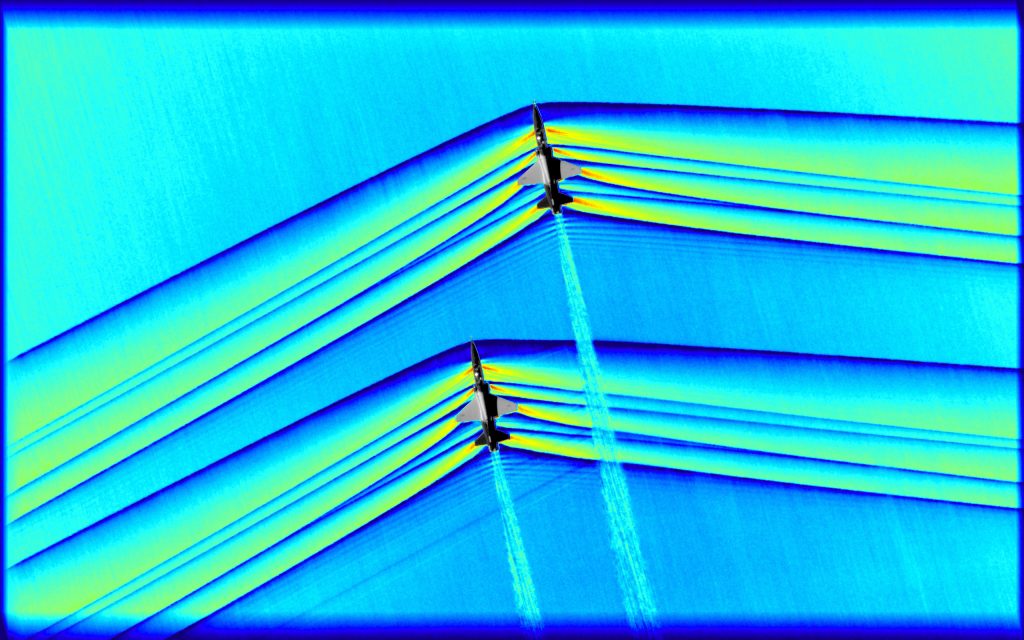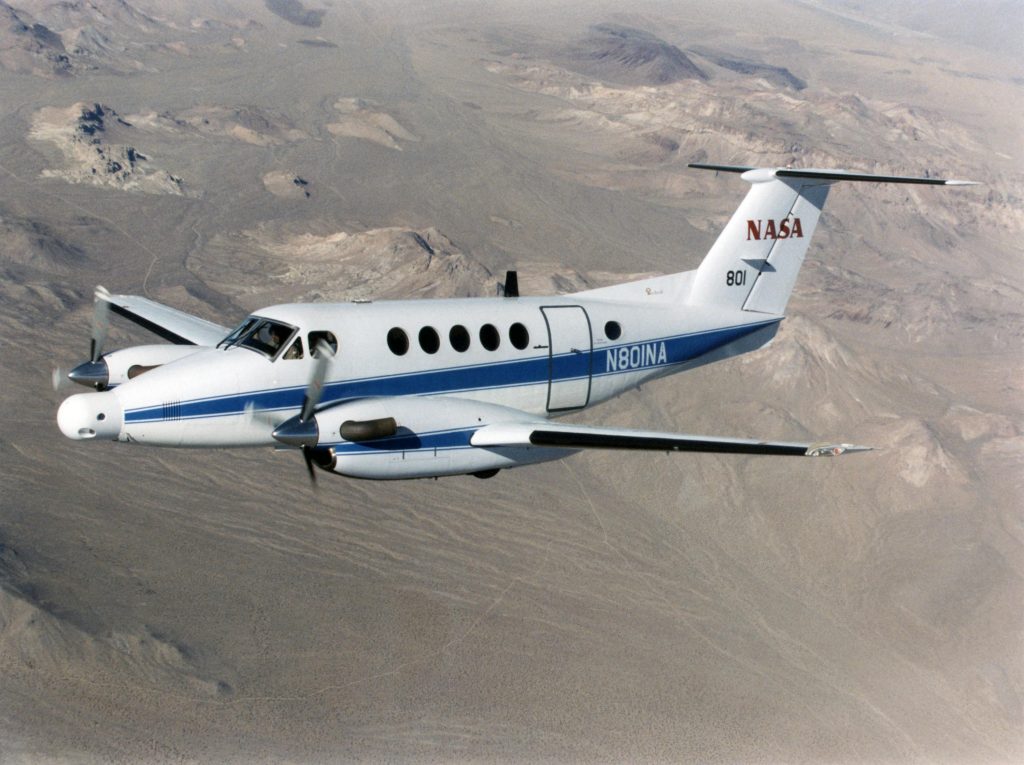
NASA released a photo of two aircraft breaking the sound barrier last week. The image was remarkable, below is the background story.
The Photo
The photo was released on March 5, 2019. It was taken by a NASA B-200 King Air flying at 30,000 feet near Edwards AFB in California. The King Air had advanced cameras on board incorporating the schlieren photography technique. The T-38’s flew below the King Air with the #2 aircraft in formation 30 feet behind and 10 feet below the lead aircraft. For more technical details of the photo and technique, see the NASA website

The Aircraft
The two aircraft are T-38 Talons. The legendary aircraft designer Edgar Schmued created the aircraft. His story is chronicled in Session 14 of Doctor Aviation. The bird has been used as part of Undergraduate Pilot Training since 1961. When I was flying the aircraft in 1985, we affectionately referred to the bird as “The White Rocket”. It certainly can move.

Example of the schlieren photography technique on a solo T-38
The Sound Barrier
The sound barrier refers to the speed of sound. It is called the barrier because for many years it was thought that it was a speed that could not be exceeded by man-made craft. On October 14, 1947, Chuck Yeager shattered the sound barrier in the Bell X-1. The incident is chronicled in Doctor Aviation Session 3. It was brought to life on the big screen in the movie, The Right Stuff.
How fast is the speed of sound? It depends. It depends on the altitude and temperature. The density of air varies by altitude. The higher the altitude the thinner (or less dense) the air. Sound travels faster in thinner air as there is less resistance to the sound waves.
At sea level, the speed of sound is 761 mph. At 45,000 feet, (the altitude at which Chuck Yeager broke the sound barrier) the speed of sound is 660 mph. Pilots refer to this speed as Mach 1.

When an aircraft passes Mach 1 a shock wave emanates from the aircraft. When the shock waves travel to the earth, a loud sonic boom can be hear on the ground.
The Purpose of the Photo
According to an excellent article in Popular Mechanics, NASA is trying to determine if the shock wave produced by an aircraft can be dampened or lessened. If it can, it would make supersonic flight more tolerable for those on the ground. One reason the Concorde passenger jet did not receive more widespread use was this issue. It was restricted to supersonic flight over the ocean due to noise restriction on land.

The US is currently working on the supersonic X-59 Quiet SuperSonic Technology X-plane, or QueSST, which is designed to lessen shock waves. Developing technology to reduce sonic booms would speed this process along.
By more precisely capturing, and thus modeling, the sonic phenomenon, scientists will be aided in the noise abatement endeavor.
